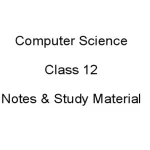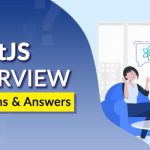JNTUK previous question papers help students prepare for their exams effectively. By practicing these papers, students can understand exam patterns, improve time management, and enhance their performance in all subjects.
Computer Science and Engineering
Question: What is the difference between a compiler and an interpreter?
Answer: A compiler translates the entire program into machine code before execution, while an interpreter translates and executes line by line.
Question: Explain the concept of object-oriented programming.
Answer: Object-oriented programming is a paradigm where programs are organized around objects and classes, focusing on reusability and modularity.
Question: What are the main components of an operating system?
Answer: The main components include the kernel, file system, user interface, process management, memory management, and device drivers.
Question: Define the term database management system (DBMS).
Answer: A DBMS is software that manages and organizes data while providing controlled access and ensuring security and consistency.
Question: What is the TCP/IP model?
Answer: The TCP/IP model is a protocol stack used for networking, consisting of layers like application, transport, internet, and network access.
Question: Describe the concept of data encapsulation.
Answer: Data encapsulation is the process of bundling data and the methods that operate on the data within a single unit, such as a class.
Question: What is the primary purpose of an algorithm?
Answer: An algorithm provides a step-by-step solution to a problem, ensuring clarity and efficiency in solving computational tasks.
Question: Explain the term “deadlock” in operating systems.
Answer: A deadlock occurs when multiple processes are waiting indefinitely for resources held by each other, preventing progress.
Question: What is normalization in a database?
Answer: Normalization is the process of organizing database tables to reduce redundancy and improve data integrity.
Question: What are the key differences between LAN and WAN?
Answer: LAN is a local area network used in a small geographic area, while WAN is a wide area network covering larger distances.
Question: What is a linked list in data structures?
Answer: A linked list is a linear data structure consisting of nodes connected by pointers, where each node contains data and a reference to the next.
Question: Explain the concept of inheritance in OOP.
Answer: Inheritance allows one class (child) to inherit properties and methods from another class (parent), promoting code reuse.
Question: Define cloud computing.
Answer: Cloud computing delivers computing services like servers, storage, and applications over the internet, enabling on-demand access.
Question: What is the significance of big data?
Answer: Big data refers to large, complex datasets that require advanced techniques for analysis and decision-making.
Question: What is the purpose of the HTTP protocol?
Answer: HTTP is a protocol used for transferring hypertext over the web, enabling communication between browsers and servers.
Question: Explain the concept of multithreading.
Answer: Multithreading allows concurrent execution of multiple threads in a program, improving performance and resource utilization.
Question: What are the primary features of Java?
Answer: Java features include platform independence, object-oriented design, security, robustness, and multithreading.
Question: What is the difference between primary and foreign keys?
Answer: A primary key uniquely identifies records in a table, while a foreign key establishes relationships between tables.
Question: Describe the concept of virtual memory.
Answer: Virtual memory uses disk space as an extension of RAM, allowing systems to handle larger workloads by temporarily storing inactive data.
Electronics and Communication Engineering
Question: What is the role of a diode in circuits?
Answer: A diode allows current to flow in one direction only, acting as a rectifier in electronic circuits.
Question: Define modulation and its types.
Answer: Modulation is the process of varying a carrier signal’s properties (amplitude, frequency, or phase) to transmit information.
Question: What are the basic components of a communication system?
Answer: The basic components include a transmitter, channel, and receiver.
Question: What is an operational amplifier (op-amp)?
Answer: An op-amp is a high-gain electronic voltage amplifier with differential input and single-ended output.
Question: What is frequency modulation (FM)?
Answer: FM is a type of modulation where the frequency of the carrier signal varies according to the message signal.
Question: Explain the concept of bandwidth.
Answer: Bandwidth refers to the range of frequencies a communication channel can transmit, determining data transfer speed.
Question: What is a microprocessor?
Answer: A microprocessor is a central processing unit (CPU) on a single chip, performing arithmetic, logic, and control tasks.
Question: What is the purpose of an antenna?
Answer: An antenna transmits and receives electromagnetic waves in communication systems.
Question: Define analog and digital signals.
Answer: Analog signals are continuous and vary over time, while digital signals are discrete and represented as binary data.
Question: What is a flip-flop?
Answer: A flip-flop is a digital circuit used for storing a single bit of data, functioning as a basic memory element.
Question: What is the Nyquist theorem?
Answer: The Nyquist theorem states that the sampling rate must be at least twice the highest frequency of the signal to avoid aliasing.
Question: What is amplitude modulation (AM)?
Answer: AM is a modulation technique where the amplitude of the carrier signal varies according to the message signal.
Question: Define the term signal-to-noise ratio (SNR).
Answer: SNR is the ratio of the power of a signal to the power of background noise, indicating signal clarity.
Question: What is a transmission line?
Answer: A transmission line carries electromagnetic waves from one point to another, often used in telecommunication.
Question: What is a filter in electronics?
Answer: A filter is a circuit that allows certain frequencies to pass while attenuating others, used for signal processing.
Question: Explain the concept of phase shift.
Answer: Phase shift refers to the change in phase angle between two waveforms, often measured in degrees or radians.
Question: What is the purpose of a capacitor?
Answer: A capacitor stores electrical energy temporarily and releases it as needed in circuits.
Question: What is the difference between a conductor and a semiconductor?
Answer: A conductor allows free flow of electrons, while a semiconductor’s conductivity lies between conductors and insulators.
Question: Define the term “voltage regulation.”
Answer: Voltage regulation measures the stability of output voltage in power supplies under varying load conditions.
Question: What is the function of a transistor?
Answer: A transistor acts as a switch or amplifier in electronic circuits, controlling current flow.
Mechanical Engineering
Question: What is the difference between heat and temperature?
Answer: Heat is energy transferred between systems due to temperature differences, while temperature measures the system’s thermal state.
Question: Define fluid mechanics.
Answer: Fluid mechanics studies the behavior of fluids (liquids and gases) under forces and in motion.
Question: What is the second law of thermodynamics?
Answer: The second law states that entropy of an isolated system always increases over time, defining heat flow direction.
Question: What is a gear?
Answer: A gear is a mechanical component with teeth, transmitting torque by meshing with other gears.
Question: What is stress and strain?
Answer: Stress is the force per unit area on a material, and strain is the deformation resulting from stress.
Question: What is the difference between a pump and a compressor?
Answer: A pump moves liquids, while a compressor increases the pressure of gases.
Question: What is the Carnot cycle?
Answer: The Carnot cycle is an idealized thermodynamic cycle describing the maximum efficiency of heat engines.
Question: Define viscosity.
Answer: Viscosity is a fluid’s resistance to flow, influenced by intermolecular forces and temperature.
Question: What is welding?
Answer: Welding is a fabrication process joining materials, typically metals or thermoplastics, by melting them together.
Question: What is the purpose of a crankshaft?
Answer: A crankshaft converts reciprocating motion into rotational motion in engines.
Question: What is a turbine?
Answer: A turbine is a device that extracts energy from a fluid flow and converts it into mechanical work.
Question: Explain the concept of thermal conductivity.
Answer: Thermal conductivity measures a material’s ability to conduct heat.
Question: What is a boiler?
Answer: A boiler is a vessel that heats water to produce steam for power generation or industrial use.
Question: What is the difference between a four-stroke and a two-stroke engine?
Answer: A four-stroke engine completes a power cycle in four strokes, while a two-stroke engine does so in two.
Question: What is the function of a bearing?
Answer: A bearing reduces friction and supports rotational or linear motion between moving parts.
Question: Define the term hydraulic system.
Answer: A hydraulic system uses pressurized fluid to transmit power for mechanical operations.
Question: What is the Bernoulli principle?
Answer: The Bernoulli principle states that as fluid velocity increases, pressure decreases.
Question: What is fatigue in materials?
Answer: Fatigue is the weakening of a material due to repeated stress or strain over time.
Question: What is the function of a heat exchanger?
Answer: A heat exchanger transfers heat between two or more fluids without mixing them.
Understanding previous question papers for JNTUK is an effective way to excel in academics. Practicing these papers enhances problem-solving skills and builds confidence for exams.
Latest Posts
- Step-by-step guide to download and apply for jee mains admit card 202
- Comprehensive 2025 government holidays and recruitment details for job seekers
- JEE Mains Admit Card 2025: Your Step-by-Step Guide to Downloading the Hall Ticket
- Everything You Need to Know About 2025 Government Holidays Recruitment
- Comprehensive Guide to rrb d group recruitment 2025 – Eligibility, Vacancies, and Application
- Detailed guide to nps trust recruitment 2025 vacancies, eligibility and apply process
- Comprehensive guide to hpcl recruitment 2025 notification, vacancies, and application process
- ignou bed admission 2025 complete recruitment guide with eligibility and process
- Comprehensive Guide to Indian Army Agniveer Recruitment 2025 Notification and Jobs
- Everything You Must Know About CBSE Board Exams 2025 Changes & New Rules





